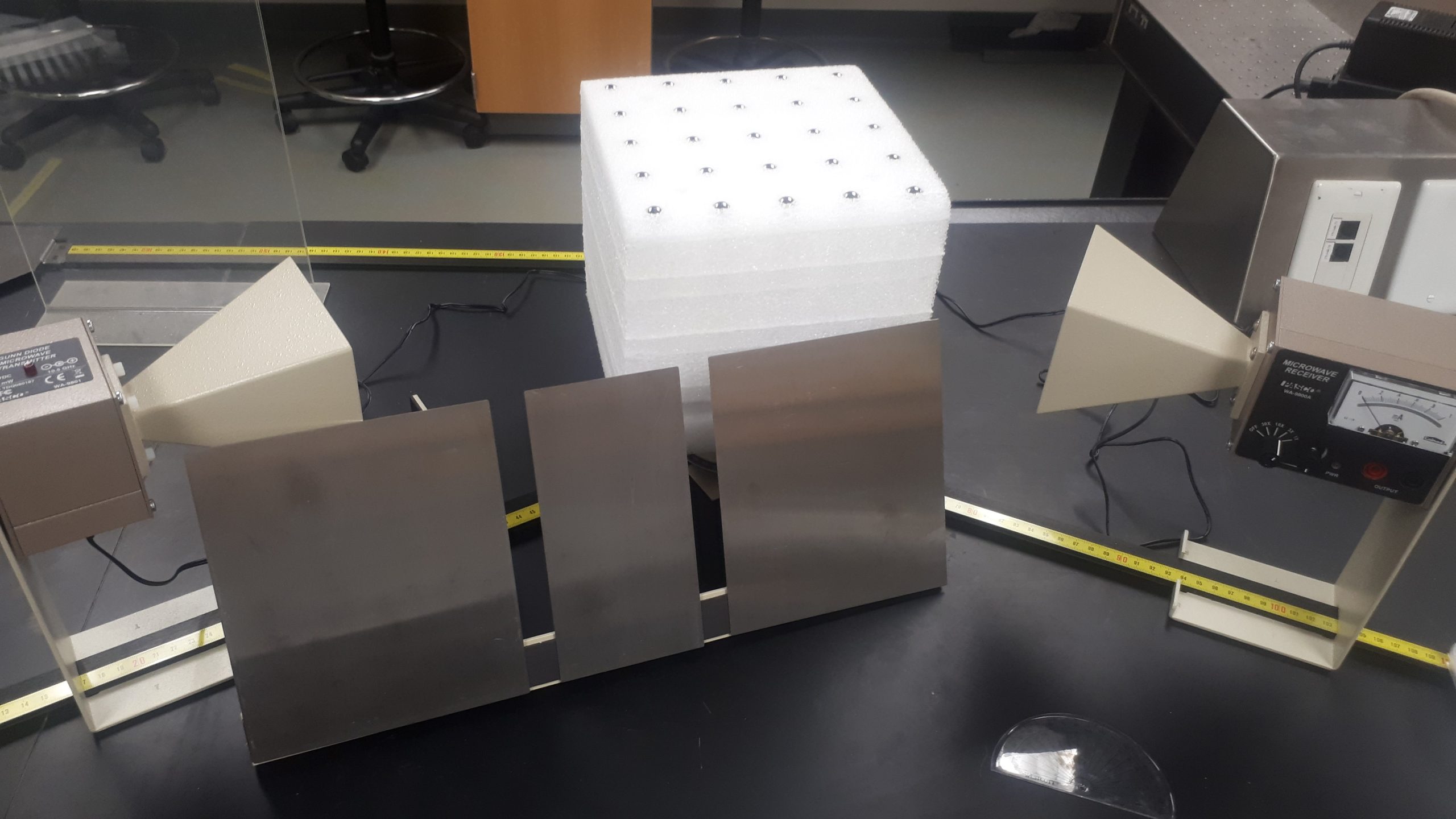Microwave Diffraction
Experimental Apparatus
This experiment uses 10-Ghz microwaves, which have a wavelength of 2.85 centimeters: Absolutely enormous compared to the wavelength of visible light at about 600 nm. The much-larger waves mean that we can use macroscopic optical components and that nobody has to worry about stray laser light and the eye-protection that goes along with it. The apparatus is shown in Figure 5. The microwave Transmitter and Receiver rest on arms that can rotate about the center of the apparatus, which is itself a rotating table. Therefore, the user can control the angle of incidence and the angle of the detector independently. Lots of angles in this experiment.
Figure 5: Microwave diffraction apparatus. Transmitter on the left, Receiver on the right. The reflecting plane, double-slit panels, and mock crystal are shown.
The reading meter on the Receiver can be adjusted so that your measurements always use the full scale of the meter. Some of the measurements you do in this experiment have you set this scale at the start of a series of measurements. DO NOT adjust the scale DURING a series of measurements unless you absolutely must. And in that case, record the gain settings you changed.
In this experiment, you will be using the flat reflector, reflector pieces on the magnetic strip, and lattice cube. All of these elements should be present when you arrive at the lab,
